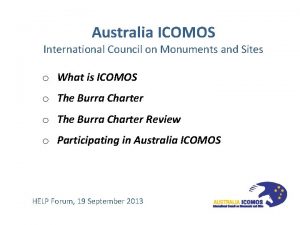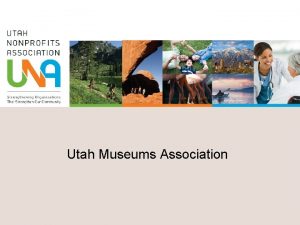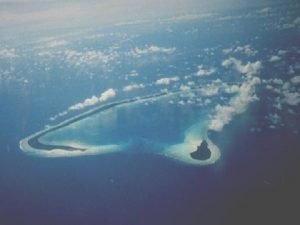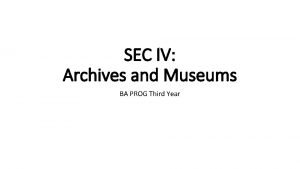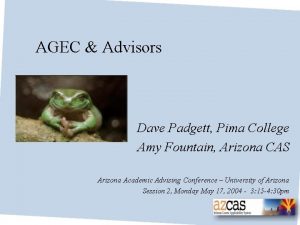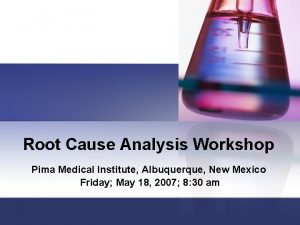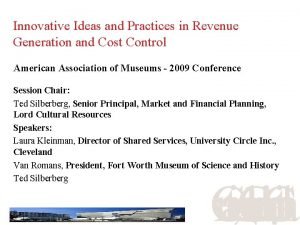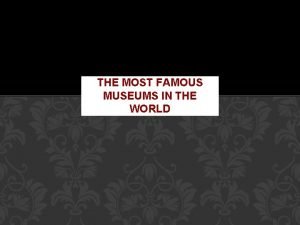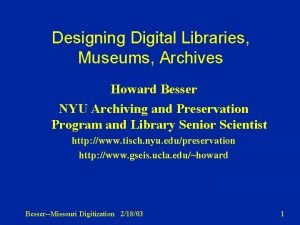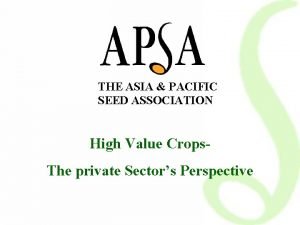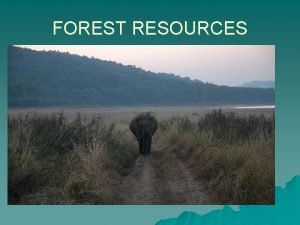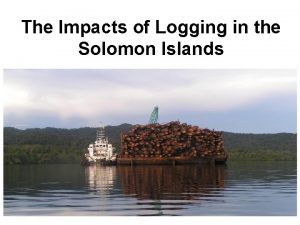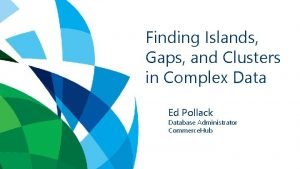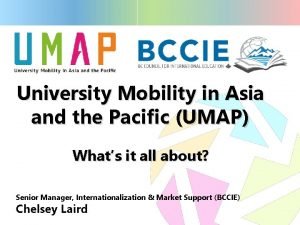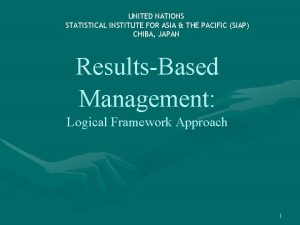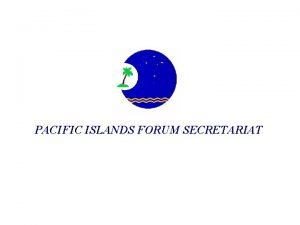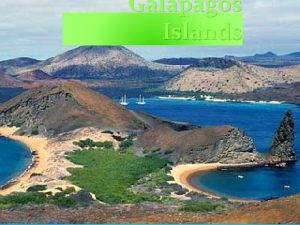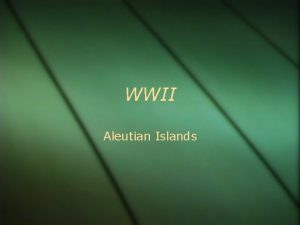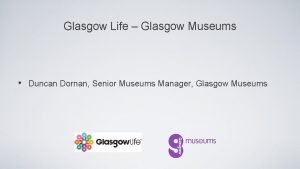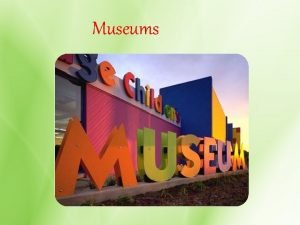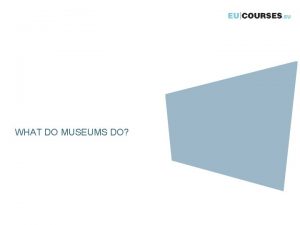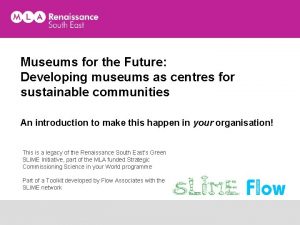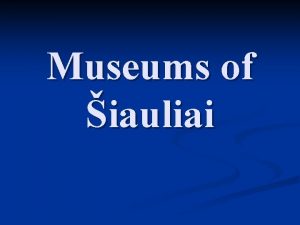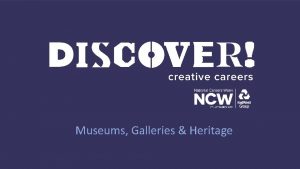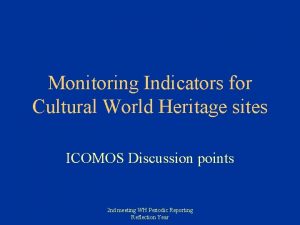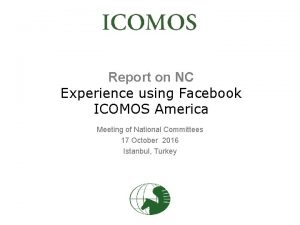PIMA and ICOMOS Pasifika Pacific Islands Museums Association


















- Slides: 18

PIMA and ICOMOS Pasifika

Pacific Islands Museums Association PIMA develops community participation in heritage management and brings together 42 Museums and cultural centres in the Pacific Islands to develop their capacity to identify research, manage, interpret and nurture cultural and natural heritage.

PIMA Represents museums, cultural centres, national trusts, cultural departments and ministries, national parks, historic preservation offices, Interpretative centres, cultural associations and arts councils. Members also include international museums with Pacific collections Universities, research centres and individuals within the region and Internationally which support the PIMA vision, mission aims and Activities.

PIMA members include all the countries, states and territories of the Pacific region including American Samoa, Cook Islands, Easter Island Rapa Nui, Federated States of Micronesia, Fiji, French Polynesia, Guam, Hawaii, Kiribati, Marshall Islands, Nauru, New Caledonia, Norfolk Island, Northern Mariana Islands, Niue, Palau, Papua New Guinea, Solomon Islands, Tonga, Tuvalu, Vanuatu and Western Samoa.

PIMA’s Executive Board Chairperson Adi Meretui Ratunabuabua Principal Cultural Development Officer, Fiji Secretary Ms. Sina Ah Poe (Assistant Curator, Museum Treasurer Mr Emmaneul Kasaherou of Samoa) Director Tjibaou Cultural centre, New. Caledonia Board Members Mr Ralph Regenvanu (Director, Vanuatu National Cultural Centre). Honorary Board Members – Mrs Faustina Rehuher (immediate past chair) Director Belau National Museum, Palau) Mr Lawrence Foana’ota (Director Solomons Islands National Museum) Secretary General Dr. Kim Selling (Australian volunteer) Vanuatu

Professional Development There a range of areas in the cultural sector where professional development is required in order to boost cultural/creative industries in the region: cultural and arts management; heritage management including management of Traditional Knowledge; artists development, cultural economics, and doctoral level trained personnel in cultural/Pacific/Indigenous studies.

GAPS Cultural and arts management training and education are required to strengthen the management of governmental and nongovernmental arts and culture institutions such as national Arts Councils, artist collectives and regional artist networks. At present the number of qualified arts and culture managers in the region is low. Existing managers are overworked and unable to take initiatives or advantage of existing opportunities. There are currently no Cultural Economists in the Pacific region in spite of the potential of cultural industries to development.

Strategy: Short term Work with donors and Education and Culture Departments to increase numbers of scholarships made available for cultural and arts management studies and cultural economics. Medium to long term Develop Cultural and arts management studies in the region, including by distance education, and advocate for a Cultural Economics stream in existing regional economics programs

Heritage management is an area addressed by the Pacific Islands Museum Association (PIMA) in its Training Strategic Plan 2007 -2010. What follows are a sample of the training needs identified by PIMA:

Training Needs: Training of museum professionals, community leaders and noncultural sector partners (e. g. development planning and tourism personnel) Work with Education Departments to improve history and culture offerings, including promoting the usage of UNESCO’s ‘Heritage in Young Hands’ Program. Development of a Pacific Heritage Certificate. (TVET accredited to University levels) ie Maori Cadet scheme, Nelson Polytechnic Offer focused workshops with materials developed for the region. Promote existing regional/national tertiary level programs in the area of cultural heritage, archaeology, cultural resource management, museum studies.

GAPS Artist development requires increased numbers of residencies and artist exchanges, as well as scholarships to be offered for qualifications in Music, Visual and Performance Arts, Graphic Arts, Film and Creative Writing.

Strategy: Support study currently undertaken to identify and evaluate artist residencies offered in the Pacific Work with donors and international/regional organisations and governments to increase scholarship offerings for Pacific Island students in above areas.

GAPS The number of qualified regional university level lecturers and professionals in the areas of Archaeology, Pacific Studies, Anthropology, Linguistics, Indigenous Studies, and Cultural Studies remain low. This is a detriment to the development of research and professional work in the areas of cultural heritage and cultural resource management. At present, there is little regional expertise in these areas on which international organisations such as UNESCO, governments and communities can draw on to address heritage needs, and design and implement policies.

This lack is also a detriment to the promotion of context-appropriate development and governance. Doctoral level theory and applied knowledge about Pacific societies must be made more available to regional students so that Pacific leaders are well advised and development policies in the region take into consideration cultural needs and heritage preservation and protection.

Strategy: Conduct a stock take of available programs and scholarships in above areas Develop plan of action for donor support and national government support for scholarships in needed areas in collaboration with regional universities including in Australia, New Zealand Hawai’i. Promote development of offerings in above areas at Pacific Islands regional and national tertiary level institutions.

Pacific Heritage Network Culture and Education should form closer links Website www. culturepacific. org

Vision Working together, preserving, celebrating and nurturing the heritage of the peoples of the Pacific Islands. PIMA We share a dream that our Pacific Islands heritage is protected and enriched for future generations. Pacific World Heritage Vision

Vinaka vaka levu Thank you for your time Meretui Ratunabuabua on behalf of PIMA executive board
 Icomos
Icomos Utah museums association
Utah museums association Pacific islands
Pacific islands Archives and museums du study material
Archives and museums du study material Egyptian vs pima cotton
Egyptian vs pima cotton Agec pima
Agec pima Pima master gardeners
Pima master gardeners Pima medical institute dress code
Pima medical institute dress code Revenue generating ideas for museums
Revenue generating ideas for museums Famous museums of the world
Famous museums of the world Getty.edu
Getty.edu Royce hall ucla
Royce hall ucla Peace museums
Peace museums Asia pacific seed association
Asia pacific seed association Deforestation in andaman and nicobar islands
Deforestation in andaman and nicobar islands Positive impacts of logging
Positive impacts of logging Gaps and islands
Gaps and islands University mobility in asia and the pacific
University mobility in asia and the pacific Statistical institute for asia and the pacific
Statistical institute for asia and the pacific
